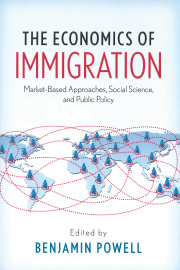As summer heats up, droughts across the nation are causing municipalities to restrict water usage. My town of Lubbock, Texas, is no exception. Most people believe that Lubbock’s water shortage is caused by our four-year-long drought. But water shortages in Lubbock and elsewhere are not meteorological phenomena. The shortages are a man-made result of bad economic policy.
Sure, Mother Nature has been stingy. Since 2011, the driest year on record, Lubbock has received only about half of the predicted average rainfall. Lubbock is far from alone. Most of Texas is experiencing reduced water supplies, and about a quarter of the state, including Lubbock, is classified as having “exceptional drought” conditions.
As is shown in the superb book, Aquanomics: Water Markets and the Environment, droughts make water scarcer, but by themselves they cannot cause shortages. To have a shortage and a risk of depletion, a resource must be mispriced.
Water is much more plentiful in Lubbock than diamonds are. Yet, no one is worried that we might run out of diamonds. Jewelers are not restricted to selling diamonds only on certain days of the week or only for purposes the government deems most valuable.
Instead, jewelers set diamond prices high enough so that they won’t run out of diamonds. The high prices force consumers to use diamonds only for purposes that the consumers themselves judge as most valuable. As a result, we don’t face a shortage of diamonds at the market price.
Unfortunately, we have shortages of water because the city misprices it. Lubbock charges between $4.31 and $7.06 per 1,000 gallons to residential users within city limits,depending on their usage. It’s obvious that the prices are too low from the simple fact that the city won’t let residents consume as much water as they would like at these prices.
On June 1, Lubbock officials declared “Stage Two Water Restrictions.” These measures limit residents to watering their lawns on one designated day per week and prohibit flushing out gutters or spraying down hard surfaces and buildings, among other restrictions. According to Aubrey Spear, director of Lubbock’s water resource department, “It’s a precautionary measure for us to conserve our water and make sure we have the water we need through the drought.” If the drought worsens, more stringent restrictions may be put in place.
Raising water prices is a better solution. Government planners, whether in the Lubbock Water Department or the former Soviet Union, don’t know how valuable resources are to individuals in their alternative uses. To generate that information, people need to be left free to choose for themselves how — and how much — to consume water (or any other resource) when confronted with prices that accurately reflect scarcity.
With the freedom to choose, consumers can demonstrate whether it’s worth the cost to them to water their lawn an extra day or hose dust off of their house. Realistic pricing also incentivizes them to take account of water’s scarcity when they consume it in ways that aren’t currently prohibited. Have your long shower if you want . . . but pay the real price of it instead of the current subsidized rate.
Water markets are mismanaged by municipalities, regional authorities, state governments and federal bureaucrats. As a result, local bureaucrats dictate when and how we can water our lawns while federal bureaucrats condemn us to using toilets that barely flush and showers that trickle. All of this command-and-control regulation would be unnecessary if prices were allowed to adjust to eliminate water shortages.
Ideally, market forces would determine both the supply and demand side of water markets. But even while much water is supplied by governments there is an easy rule for them to follow. Raise prices on water volume (not base charges) until all water-use regulations are unnecessary. The higher prices would conserve water more efficiently than the usage restrictions.











